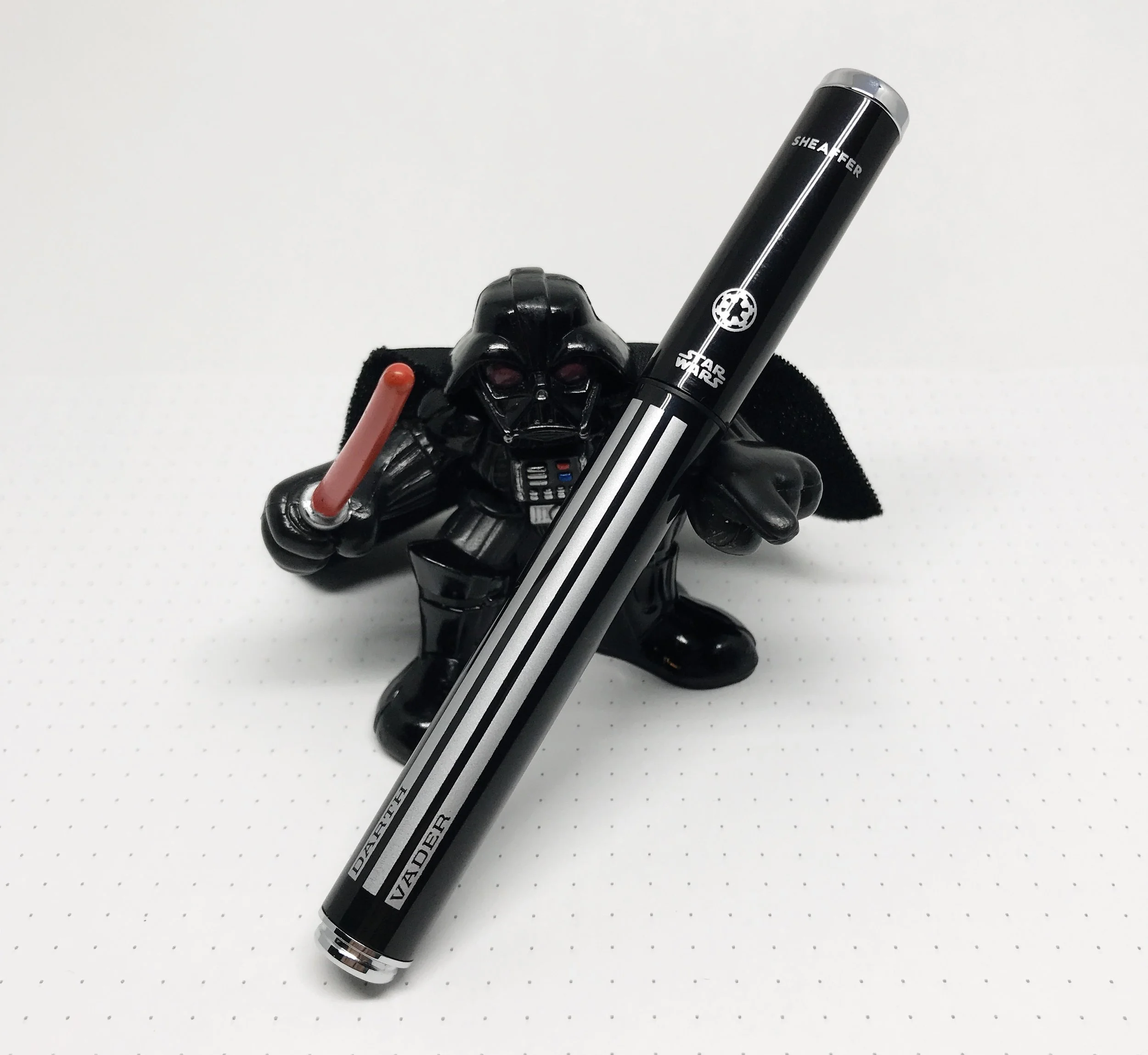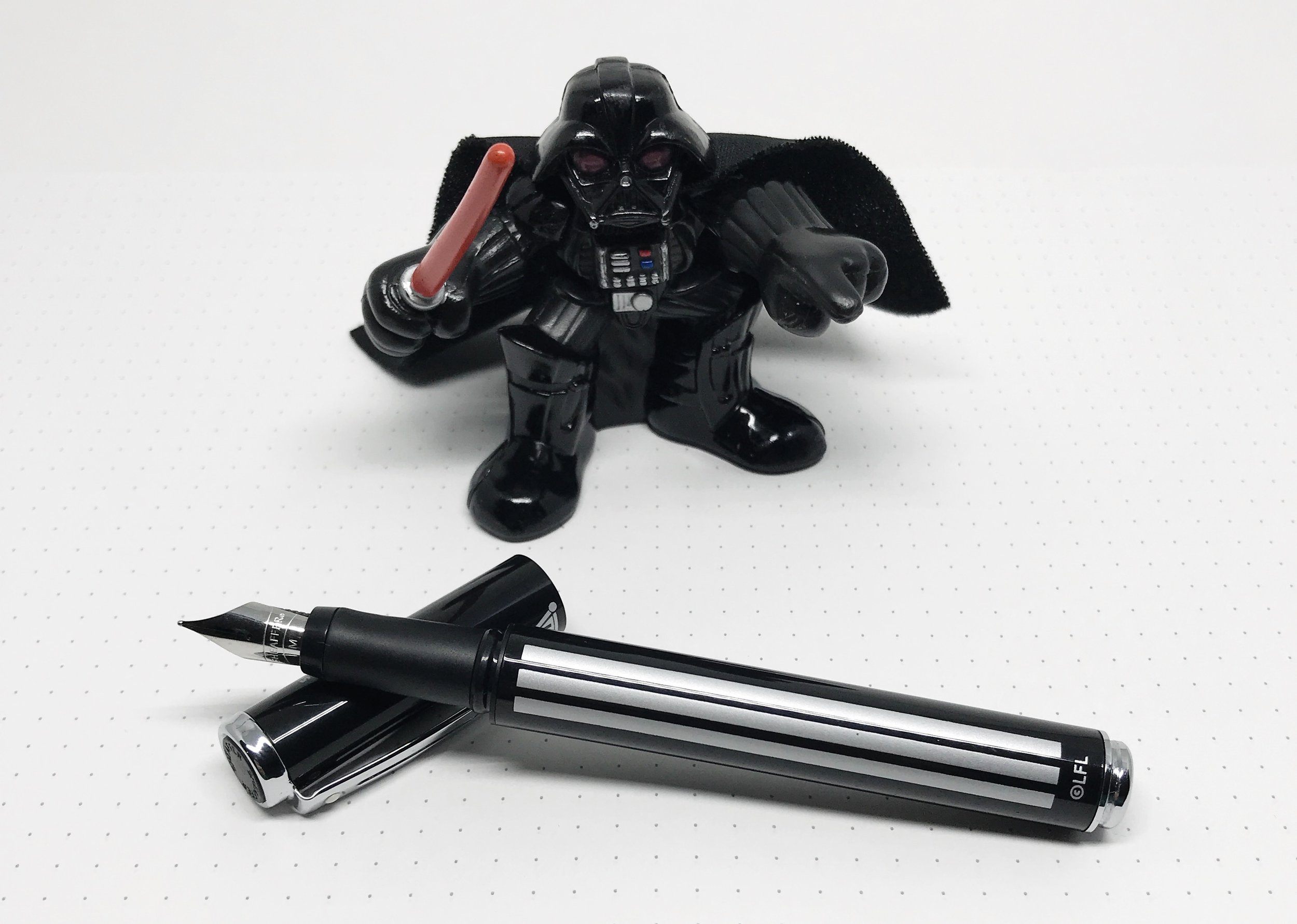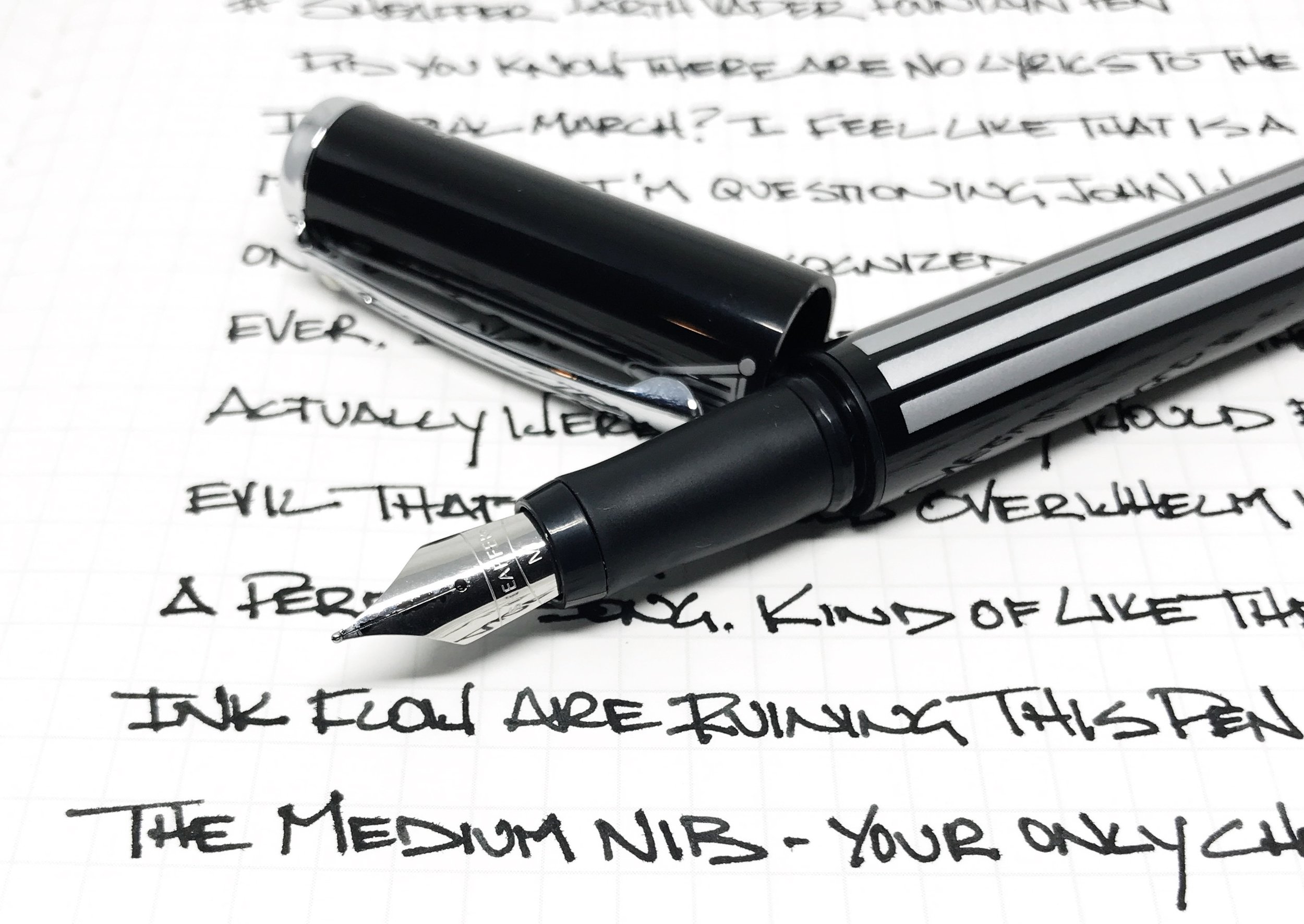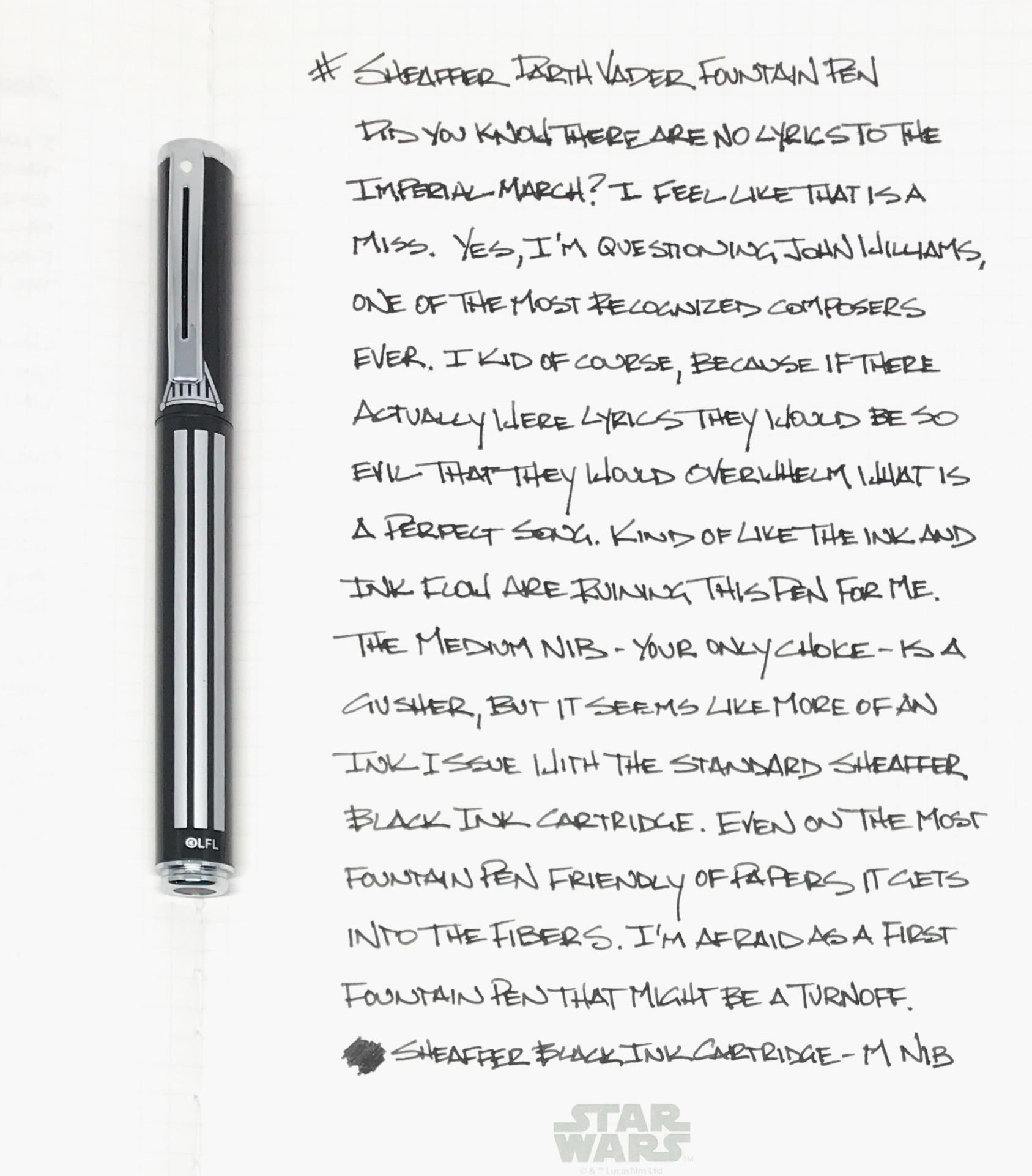Star Wars fans rejoice - there are now inexpensive fountain pens to add to your collection! The Sheaffer Pop Star Wars series features fountain and rollerball pens of three beloved characters: Darth Vader, R2-D2, and Yoda.
I picked the Darth Vader fountain pen for this review, although all three designs represent their characters very well. The Vader pen was just too slick to pass up with its black base and silver accents.
The barrel itself is made from plastic, and the cylindrical shape has a nice feel. The cap snaps on solidly, and posts on the back equally as well. The grip section is rubberized, which I’m fine with. It’s not slippery at all. The clip is a little thin, buts seems strong enough to last, and of course features Sheaffer’s famous white dot.
I’m in love with the look and feel of the pen, but as you know, that is only part of the story. The writing experience could be better, like the Phantom Menace if you erased all of the Jar-Jar Binks scenes.
The medium steel nib - the only size choice - is a smooth writer. Very smooth in fact. There is no scratchiness, and no skipping. But it is wet. Far too wet for my tastes. It writes like a 1.0 mm or wider rollerball pen.
I think it is the ink to be honest. The pen ships with a standard Sheaffer black ink cartridge, and it flows like a sieve from the nib. The way it spreads as soon as it hits the page - even on fountain pen friendly paper - makes me think the ink is the issue. You have to write fast to keep ahead of the ink pooling. It’s a proprietary fitting too, and I don’t have a Sheaffer converter to try other inks, and I wasn’t going to drain my only Sheaffer cartridge either.
So, what to do with this pen, and this series of fountain pens? If you want to buy this pen for someone who has never used a fountain pen I would choose one of the rollerball pens instead. Yes, it looks amazing, but the wetness of the ink could frustrate a beginner. If you want to buy this pen for someone who has experience with fountain pens then I say go for it. They can change things up as needed.
For me, I like this pen so much I’m going to buy a converter and see if I can get the performance more to my liking. The outside of the pen is cool enough to make me want to work on the inside. Plus, my son says it has have red ink, and I think he is right.
Lightsaber mode initiated.
(Goldspot provided this product at no charge to The Pen Addict for review purposes.)
Enjoy reading The Pen Addict? Then consider becoming a member to receive additional weekly content, giveaways, and discounts in The Pen Addict shop. Plus, you support me and the site directly, for which I am very grateful.
Membership starts at just $5/month, with a discounted annual option available. To find out more about membership click here and join us!

















